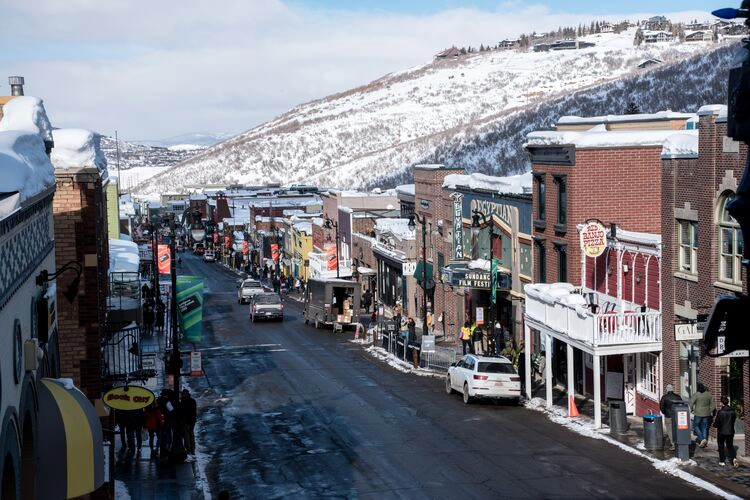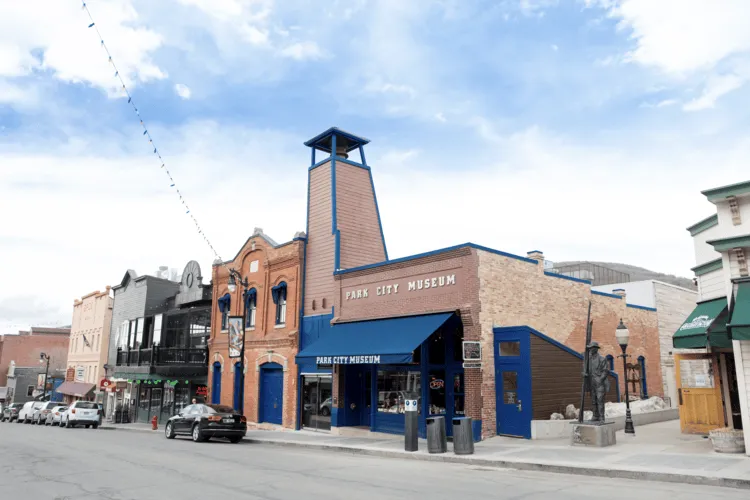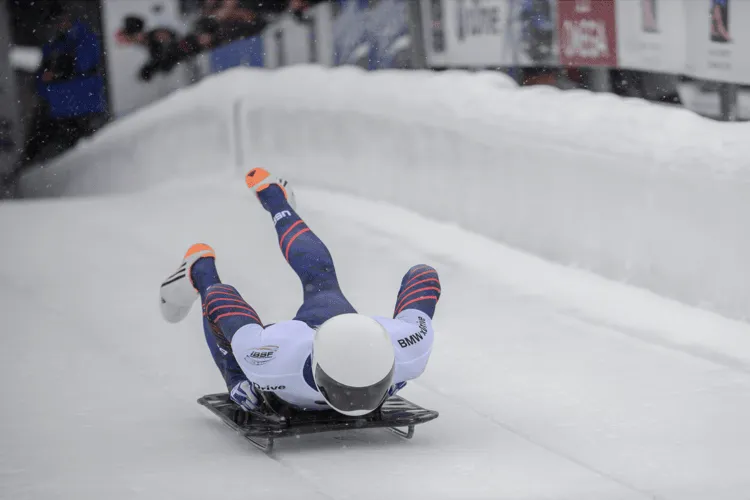
From cattle grazing to silver mining, to winter sports and summer trekking, Park City keeps on evolving, Geordie Torr reports
By Geordie Torr
Sponsored feature
It was 4 am on the morning after payday when a Chinese labourer noticed smoke coming from the American Hotel on Park City’s Main Street. By the time he got the news to Sheriff Thomas Walden, who fired three shots from his pistol to sound the general alarm, buildings on both sides of the hotel were ablaze.
The nascent mining town had developed in a narrow canyon about 50 kilometres southeast of Salt Lake City, and wind blowing up the valley fanned the flames. Hundreds of volunteers, awoken by the piercing shriek of the warning whistle at Marsac Mill, could do little to tame the rapidly growing conflagration; most of the buildings were built from pine, which combusted easily. Desperate measures were required, and at 11 am, the mill manager gave the order to rupture the wooden flume that was used to channel water to the mill from the mine on the mountain above, causing water to rush down the canyon and douse the flames.

An hour later, the fire was contained, but by then about three-quarters of Park City – more than 200 buildings, including at least 120 businesses – was a smouldering ruin. Remarkably, although numerous animals perished and at least 500 residents were made homeless, there was no loss of human life.
The fire, which took place on Sunday 19 June 1898, remains the largest in Utah’s history. Despite the devastation, there was little question as to whether the town would be rebuilt – the enormous silver deposits that had fuelled its establishment in the first place were far from being exhausted. But the fire wouldn’t be the last challenge that Park City would face.
Finding gold
Evidence of nomadic camps in the region around Park City dates back some 5,000 years. Harsh winter conditions meant that these upland areas were only habitable during the spring and summer, so they became seasonal hunting and gathering destinations, largely for the Shoshone, Goshute and Ute tribes.
Around the middle of the 18th century, Spanish explorers became the first Europeans to visit the region. They were followed by fur trappers and then, in the mid-19th century, by Mormon settlers. In 1848, Mormon leader Parley P Pratt explored what became known as Parley’s Canyon, which runs up from Salt Lake City and into the Wasatch Mountains. At the top of the canyon, just over the summit, was a basin (now known as Snyderville Basin, named for Samuel Snyder, who harnessed the flow of three creeks to power a sawmill in 1853) in which Pratt began to graze cattle each summer. He was soon joined by several other settler families, who named the area Parley’s Park City.

In 1862, a group of US Army soldiers under the command of Colonel Patrick E Connor was deployed in the region to protect the federal mail route. Many of the soldiers were veterans of the Nevada and California goldfields and they spent a good deal of their leisure time prospecting in the surrounding hills, eventually uncovering rich veins of silver and lead ore; the first claim was filed in December 1869.
As news of the finds spread, prospectors began to flood the area, creating a teeming melting pot of religions and ethnicities, living in makeshift camps along the hillsides close to the mines and lower down the canyon on the site of what would become Park City. Many came from depleted mines in other parts of the world. Among them were also numerous Chinese immigrants who had worked on the transcontinental railroad. In 1880, a link to the railroad was established and by 1882, mining accounted for almost 80 per cent of Utah’s exports, much of the ore coming from Park City’s mines. Over time, a town was established, as boarding houses, mills, stores, saloons, theatres and eventually schools, houses and even an opera house were built.

In 1884, the town was incorporated, at which point it became just plain Park City. Its population grew to more than 10,000 residents. And then came the devastating fire – and the town’s rapid rebuilding; it was fully functioning again within about a year and half.
However, the town’s revival proved to be relatively short-lived. The two world wars, and the Great Depression in between them, all led to drops in the prices of silver and other metals, and by the 1950s, only a few hundred men worked in the mines. Park City became a ghost town, but it was once again ready to be reborn.
Winter sports
The snow-covered slopes around Park City first began to host skiers during the 1920s and ‘30s, and in 1947, the first lift opened in what became known as the Snow Park Ski Area on Bald Eagle Mountain, built by Park City residents Bob Burns and Otto Carpenter using discarded mining equipment and wood from local aspens and lodgepole pines. Their wives would cook hamburgers for hungry skiers.

And so began Park City’s next life. Local miners came up with a proposal for a resort on land owned by United Park City Mines, and with help from a land-redevelopment grant from the John F Kennedy administration, Treasure Mountain opened in 1963. At the time, it featured the world’s longest gondola. And just as silver had drawn prospectors, so snow began to draw tourists – and money for development.
In 1966, Treasure Mountain was renamed Park City Ski Area; 30 years later it became Park City Mountain Resort. Two additional resorts, Park City West (later renamed Canyons) and Deer Valley, opened in 1968 and 1981 respectively. After purchasing Canyons and Park City Mountain Resort, in 2015, Vail Resorts installed a gondola to connect them, thereby creating the USA’s largest ski area.

The growth of tourism saw Park City’s population rebound, to about 8,300 people today. However, the town’s residents are comprehensively outnumbered by the annual visiting population, which can number in the millions. But for ski resorts – and communities for which winter tourism is the mainstay of the economy – in the 21st century, climate change is the woolly mammoth in the room. According to the Park City Community Foundation, the region has lost six weeks of winter since the 1970s. There are also growing concerns worldwide about the social and environmental impacts of what’s become known as ‘overtourism’.
And so, with Park City facing yet another set of challenges, its administration and citizens, channelling the indomitable spirit of the town’s forebears, have decided to face these issues head-on.
Looking towards a sustainable future
The chamber of commerce is a mainstay in many US towns. Its mission is to look after the health of the town’s business community. The Park City Chamber of Commerce and Visitors Bureau has taken a particularly holistic, long-range view of that mission, taking the view that the health of the town’s businesses is deeply connected to the health of both the wider community and the local environment.

‘Our organisation recognises that with tourism success also comes great civic responsibility. We believe in the regenerative power of tourism and recognise our collective role in celebrating the positive impacts and mitigating the pinch points,’ said the chamber of commerce’s president and CEO,Jennifer Wesselhoff.
In October 2022, Summit County Council and Park City Council adopted a remarkably comprehensive sustainable tourism plan put together by Park City’s chamber of commerce. The plan’s development involved a thorough survey of residents, businesses, visitors and community leaders to pinpoint some of the problem areas. Among the key concerns raised were environmental degradation, fears that the local infrastructure would be unable to cope with visitor numbers and the feeling that the community of Park City was being subsumed by the destination of Park City. The objectives outlined in the plan include everything from the implementation of sustainable transportation, housing, water, energy and waste management policies, and initiatives to attempts to equalise the economic benefits, and mitigate the impacts, of the visitor economy.
Among the recommendations and plans is a list of so-called ‘windsocks’ – indicators relating to climate, population growth, the economy and travel intent that the local authorities will track to understand trends that could affect travel and traveller behaviour. ‘Knowing which way the wind is blowing will help decision-making be more informed and provide valuable insight on when a change of course may be necessary,’ the plan states.

The plan supports Park City Municipal Corporation’s aspiration to be net-zero carbon as a community by 2030, running exclusively on renewable energy. The roots of this aspiration go back to 2016, when Park City began to work with the local utility, Rocky Mountain Power, to bring to the grid enough renewable electricity to supply the community – no small task given that coal is Utah’s state rock. In late 2020, Park City approved an 80-megawatt solar facility in nearby Tooele County that’s expected to cover the electricity needs of Park City’s government buildings and resort operations. The town’s administrators have also been actively working with residents and local business to reduce energy demand.
It’s also increasing awareness among visitors of the options for public transport and bike share programmes to help reduce carbon emissions from vehicles, road congestion and pressure on parking. This strategy of involving visitors in supporting Park City’s sustainability aspirations underpinned the launch in May of a
new brand, Mountainkind, that’s aimed at promoting sustainable and conscious tourism by cultivating a mindset of responsibility among tourists. At its core, Mountainkind embodies a set of values and behaviours to which both visitors and residents are expected to adhere, such as recycling, leaving no trace, mindfulness toward wildlife, trail etiquette, and, yes, eco-friendly transportation.
A grant programme designed to help businesses, non-profits and other organisations in the Park City area advance sustainable tourism goals has also been set up. The programme is intended to support projects across the tourism economy, with those eligible receiving up to US$30,000 in funding. In its first year, the fund dispersed US$300,000 across 24 grants to local groups and businesses.
The central theme of the sustainability plan is a desire ‘to create a future where we consider community and environmental benefits with the same weight as economic benefits’, an aspiration that will surely see Park City once again meet the challenges that it faces.
There’s something for everyone at Park City. Check out some of the best things to do below…
Explore the historic sites
Although much of Park City’s original architecture was destroyed in the 1898 fire, many of the buildings built or rebuilt in its aftermath remain standing. Indeed, the city is home to more than 500 historic sites, including two National Register Historic Districts — the Main Street Historic District, which features 64 mining-era buildings listed in the National Register of Historic Places, built in a range of styles, such as Victorian, Queen Anne, and Spanish Revival and the Mining Boom Era Residences Thematic District, which is comprised of historically significant residential structures. The Park City Museum resides within the historic City Hall, which was built in 1885 and housed the police and fire department, as well as the territorial jail.
Sundance Film Festial

A showcase for new work by independent filmmakers, the Sundance Film Festival is held each January in venues in Park City, Salt Lake City and at the Sundance ski resort near Provo. Founded in 1978, the festival moved from Salt Lake City to Park City in 1981. Over the years, it has provided a springboard for an incredible array of notable filmmakers, including Quentin Tarantino, Steven Soderbergh, Darren Aronofsky and Paul Thomas Anderson. Sundance is the largest independent film festival in the USA; almost 90,000 people attended the 2023 festival, which hosted 423 screenings in Park City. The 2025 festival is set to run from 23 January to 2 February.
A place to hike
Whether you’re looking for shady aspen groves, clear alpine lakes or breathtaking views, you’re sure to find a walk to suit your needs, particularly in the picturesque Uinta mountain range, Utah’s highest and the only range in mainland USA oriented east–west. Mid-July through early August is when the wildflowers should be in peak bloom, or wait until autumn, when the aspens take on their golden hues. Lakes are a feature of many of the walks and many of them are perfect for picnicking and/ or swimming. And if you’re lucky, you might spot some of the local wildlife, which includes moose, elk, black bears, mountain lions, bobcats and coyotes.
Ski areas

Park City offers a convenient base for visiting two world-class ski areas: Deer Valley Resort, which has been voted the USA’s top ski resort in the World Ski Awards every year since the awards were launched in 2013, and Park City Mountain, the country’s largest resort. Both benefit from the region’s combination of high elevation and low humidity. Encircled by high desert that sucks the moisture from the air, the mountains are blanketed in an average of more than eight metres of light, fluffy snow each winter – the lack of excess moisture stopping the flakes from sticking together. Between them, the resorts offer access to almost 4,000 hectares of skiable terrain, so fresh turns are never far away.
A mining legacy
Remnants left over from the mining era are scattered all over the region around Park City, including mine buildings, abandoned mine shafts (more than 1,600 kilometres of mine workings and tunnels still riddle the slopes at Park City Mountain Resort and Deer Valley), water towers and hoists. If you’re on foot, take the 6.8-kilometre self-guided walking tour of historic Park City mining sites and landmarks, or if you’re on skis, there’s a free, guided, intermediate-level ski tour of Park City Mountain that explores the historic mining buildings and hidden relics scattered across the resort.
Trail riders
In 2011, Park City became the first place in the world to receive the Gold-level Ride Centre designation from the International Mountain Bicycling Association (IMBA) for its mountain bike trails, amenities and community. During the certification process, riders and trail advocates in Park City actually helped the IMBA to define the factors that are required to qualify for the gold level. The surrounding area now has some 800 kilometres of professionally built trails. For some of the best downhill riding, head to the Deer Valley Bike Park, or if you’re after something a bit more sedate, check out the 45-kilometre Union Pacific Rail Trail, which follows the route of the historic narrow-gauge coal and silver railroad that crisscrossed the region during the 1860s.



